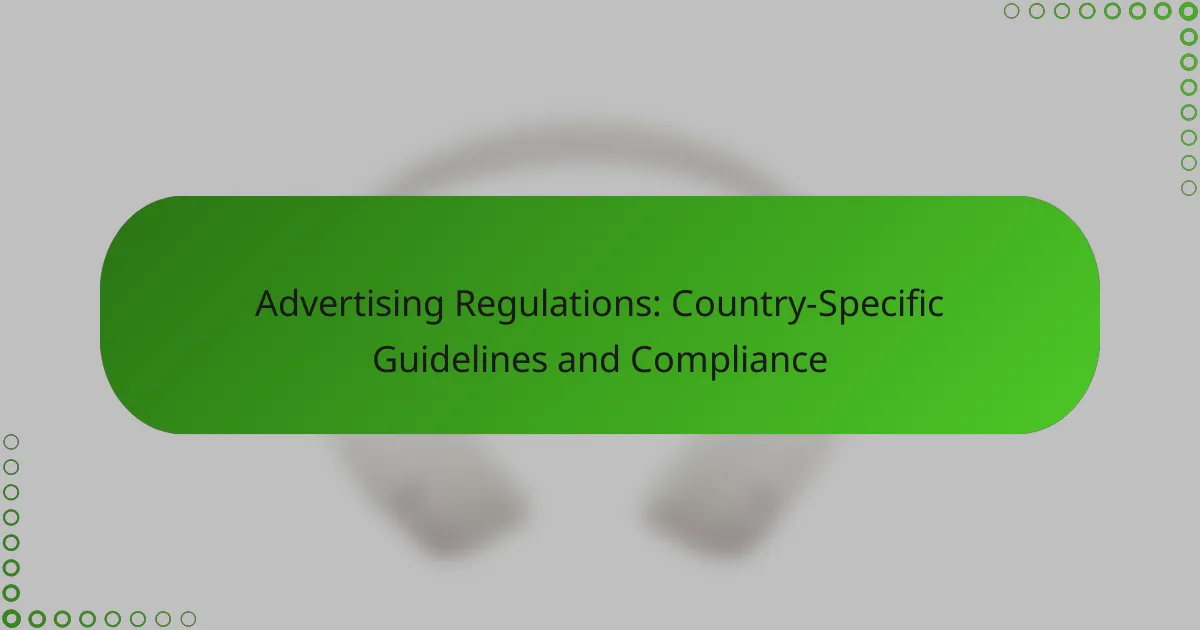The General Data Protection Regulation (GDPR) establishes crucial principles aimed at safeguarding personal data and enhancing individual privacy rights. Organizations in the UK must adopt proactive measures, including robust data protection policies and employee training, to ensure compliance and protect users’ rights. Additionally, individuals are granted specific rights that empower them to manage their personal information effectively.

How to ensure GDPR compliance in the UK?
To ensure GDPR compliance in the UK, organizations must adopt a proactive approach that includes implementing data protection policies, conducting regular audits, training employees, utilizing compliance software, and engaging legal experts. These steps help safeguard personal data and uphold individuals’ rights under the regulation.
Implement data protection policies
Establishing clear data protection policies is crucial for GDPR compliance. These policies should outline how personal data is collected, processed, stored, and shared. Regularly reviewing and updating these policies ensures they remain relevant and effective in addressing data protection challenges.
Consider including specific guidelines on data retention periods, access controls, and data breach response procedures. This clarity helps employees understand their responsibilities and reduces the risk of non-compliance.
Conduct regular audits
Regular audits are essential for assessing GDPR compliance and identifying potential gaps in data protection practices. These audits should evaluate data processing activities, security measures, and adherence to policies. Conducting audits at least annually can help organizations stay on track.
Utilize checklists to ensure all aspects of data handling are reviewed. Common areas to focus on include consent management, data subject rights, and third-party data sharing agreements.
Train employees on GDPR
Training employees on GDPR is vital for fostering a culture of data protection within the organization. Regular training sessions should cover the principles of GDPR, individual rights, and the importance of data security. Tailor the training to different roles to ensure relevance.
Consider using interactive methods, such as workshops or e-learning modules, to engage employees effectively. This approach can enhance understanding and retention of GDPR requirements.
Utilize GDPR compliance software
GDPR compliance software can streamline the management of personal data and ensure adherence to regulations. These tools often include features for tracking consent, managing data access requests, and conducting audits. Investing in reliable software can save time and reduce the risk of human error.
When selecting software, look for solutions that integrate well with existing systems and offer user-friendly interfaces. This can facilitate smoother adoption and ongoing compliance efforts.
Engage with legal experts
Consulting with legal experts specializing in data protection can provide invaluable guidance on GDPR compliance. These professionals can help interpret regulations, assess risks, and develop tailored strategies for your organization. Engaging legal counsel is especially important when dealing with complex data processing activities.
Consider establishing a relationship with a legal advisor who can provide ongoing support and updates on changes to data protection laws. This proactive approach can help mitigate legal risks and ensure sustained compliance.

What are the key principles of GDPR?
The key principles of the General Data Protection Regulation (GDPR) are designed to protect personal data and ensure individuals’ privacy rights. These principles guide organizations in their handling of personal information, emphasizing accountability, transparency, and respect for user rights.
Lawfulness, fairness, and transparency
Lawfulness, fairness, and transparency require that personal data is processed legally, in a manner that is fair to individuals, and that organizations are open about how they use this data. Organizations must have a valid legal basis for processing data, such as consent or contractual necessity.
To maintain fairness, data processing should not negatively impact individuals’ rights. Transparency involves informing individuals about data collection and usage, typically through privacy notices that clearly outline the purpose and scope of data processing.
Purpose limitation
The principle of purpose limitation states that personal data should only be collected for specified, legitimate purposes and not further processed in a way incompatible with those purposes. This means organizations must clearly define why they are collecting data at the outset.
For example, if a company collects email addresses for a newsletter, it cannot later use those addresses for unrelated marketing without obtaining additional consent. This principle helps ensure that individuals’ data is not misused or exploited.
Data minimization
Data minimization requires that organizations only collect and process the minimum amount of personal data necessary to achieve their intended purpose. This principle encourages organizations to evaluate their data needs critically.
For instance, if a service only needs a user’s name and email to create an account, asking for additional information like a phone number would violate this principle. By limiting data collection, organizations reduce the risk of data breaches and enhance user privacy.
Accuracy
The accuracy principle mandates that personal data must be accurate and kept up to date. Organizations are responsible for taking reasonable steps to ensure that any inaccurate data is corrected or deleted without delay.
For example, if a user changes their address, the organization should update their records promptly. Regular audits and user feedback mechanisms can help maintain data accuracy and integrity.
Storage limitation
Storage limitation dictates that personal data should not be kept in a form that allows identification of individuals for longer than necessary for the purposes for which it was processed. Organizations must establish clear retention policies to comply with this principle.
For instance, if data is collected for a specific project, it should be deleted once the project is completed, unless there is a legal requirement to retain it longer. This practice helps minimize the risk of data exposure over time.
Integrity and confidentiality
The integrity and confidentiality principle emphasizes the need for organizations to process personal data securely, protecting it against unauthorized access, loss, or damage. This involves implementing appropriate technical and organizational measures.
For example, using encryption, access controls, and regular security assessments can help safeguard personal data. Organizations should also train employees on data protection practices to ensure compliance with this principle.

What rights do individuals have under GDPR?
Under the General Data Protection Regulation (GDPR), individuals have several rights designed to protect their personal data. These rights empower individuals to control how their data is collected, used, and shared by organizations.
Right to access
The right to access allows individuals to request and obtain confirmation from organizations about whether their personal data is being processed. If so, individuals can request a copy of their data along with details about its use.
Organizations must respond to access requests within one month, and this period can be extended by two additional months for complex requests. It is advisable for individuals to specify the data they are interested in to streamline the process.
Right to rectification
The right to rectification enables individuals to request corrections to inaccurate or incomplete personal data held by organizations. This right ensures that the data used for processing is accurate and up to date.
Individuals should provide sufficient information to support their request for rectification. Organizations are required to respond within one month, and if the request is denied, they must provide a justification.
Right to erasure
The right to erasure, often referred to as the “right to be forgotten,” allows individuals to request the deletion of their personal data under certain conditions. This includes situations where the data is no longer necessary for the purposes for which it was collected.
Organizations must evaluate the request and delete the data if it meets the criteria. However, there are exceptions, such as when data retention is required for legal obligations. Individuals should be aware that this right is not absolute.
Right to restrict processing
The right to restrict processing permits individuals to limit how organizations process their personal data. This can be useful when individuals contest the accuracy of their data or object to its processing.
When processing is restricted, organizations can only store the data and cannot use it for other purposes unless the individual consents. Individuals should clearly communicate their reasons for requesting a restriction to ensure compliance.
Right to data portability
The right to data portability allows individuals to obtain their personal data in a structured, commonly used, and machine-readable format. This right facilitates the transfer of data between different service providers.
Individuals can request that organizations send their data directly to another service provider, where technically feasible. This right enhances individuals’ control over their data and encourages competition among service providers.









